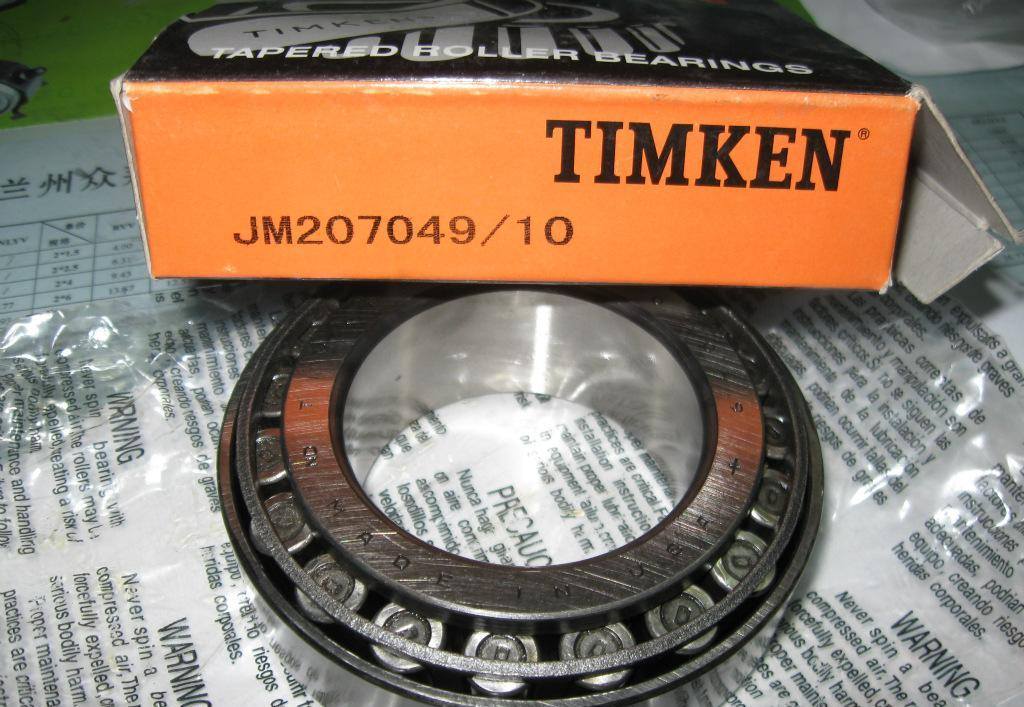
 News
NewsRoller bearings are one of the indispensable basic components of running machinery.With the rapid development of technology, enterprises have increasingly higher requirements for the quality of rolling bearings. Especially the enterprises of automation and continuous production have very strict requirements on the reliability of rolling bearings. Therefore, how to improve the reliability of rolling bearings has become one of the main problems that rolling bearing manufacturers and customers need to solve urgently.
The reliability of the rolling bearing is closely related to the failure form of the rolling bearing. To improve the reliability of the bearing, we must start from the failure form of the bearing and carefully analyze the cause of the failure of the rolling bearing to find out the specific measures to solve the failure.
1. Contact fatigue failure
The common form of contact fatigue failure is contact fatigue spalling. Contact fatigue spalling occurs on the working surface of the bearing, which is often accompanied by fatigue cracks. It first occurs from the maximum alternating shear stress below the contact surface, and then spreads to the surface to form different spalling shapes, such as pitting or pitting spalling. Shredded into small pieces. Due to the gradual expansion of the peeling surface, it will slowly expand to the deep layer and form deep peeling. Deep spalling is the fatigue source of contact fatigue failure.
2. Wear failure
Wear failure refers to the failure caused by the continuous sliding wear of the metal on the working surface caused by the relative sliding friction between the surfaces.
Continued wear and tear will cause gradual damage to bearing parts, and eventually lead to loss of bearing dimensional accuracy and other problems. Wear failure is one of the common failure modes of various types of bearings. According to the form of wear, it can usually be divided into abrasive wear and adhesive wear.
Abrasive wear refers to wear caused by foreign hard particles or hard foreign objects or abrasive debris on the metal surface squeezed between the working surfaces of the bearing and the relative movement of the contact surface, often causing furrow-like scratches on the working surface of the bearing.
Adhesive wear refers to uneven friction on the friction surface due to microscopic protrusions or foreign objects on the friction surface. When the lubrication condition is seriously deteriorated, due to local friction heat generation, it is easy to cause local deformation of the friction surface and friction micro welding phenomenon. When the surface metal may melt locally, the force on the contact surface will tear the local friction welding point from the substrate and increase the plastic deformation.
Click here for more details about TIMKEN Bearing JM207049/10.

3. Fracture failure
The main reasons for bearing fracture failure are defects and overload. When the applied load exceeds the material strength limit and the parts break, it is called overload fracture. The cause of overload is mainly the sudden failure of the host or improper installation. Defects such as micro-cracks, shrinkage cavities, air bubbles, large foreign objects, overheated tissues and local burns of bearing parts can also cause fractures at the defects when they are impacted or overloaded or severely vibrated, which is called defect fracture.
Therefore, the correct and reasonable use of bearings is a systematic project. In the process of bearing structure design, manufacturing and installation, for the links that produce early failures, corresponding measures can be taken to effectively increase the service life of the bearings and the host.